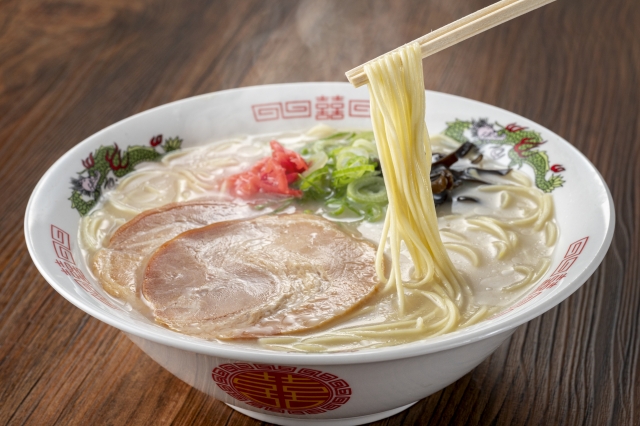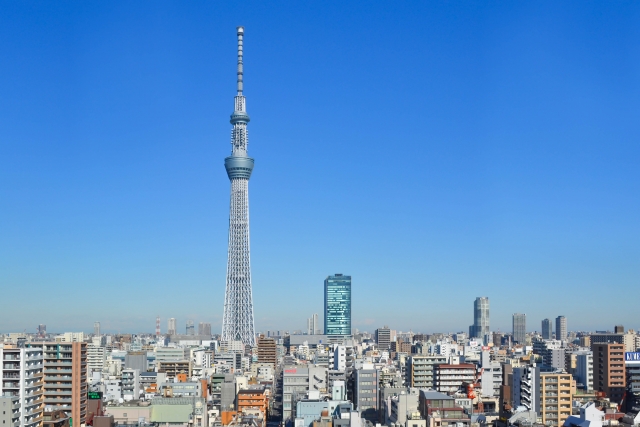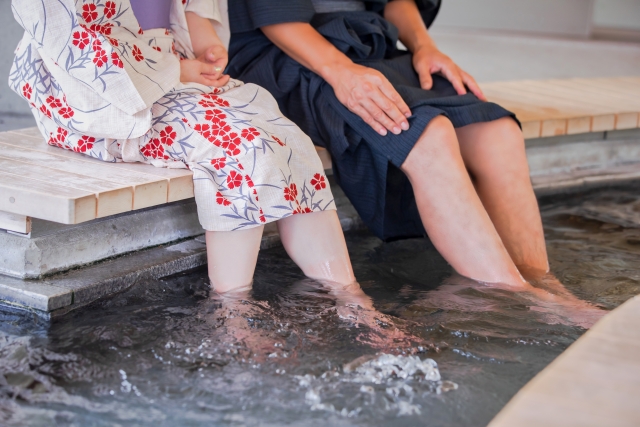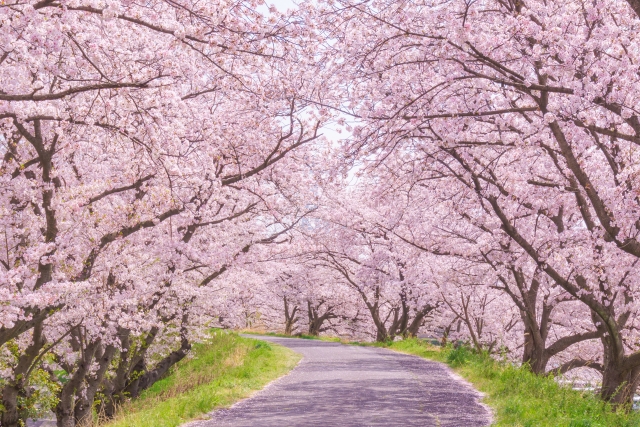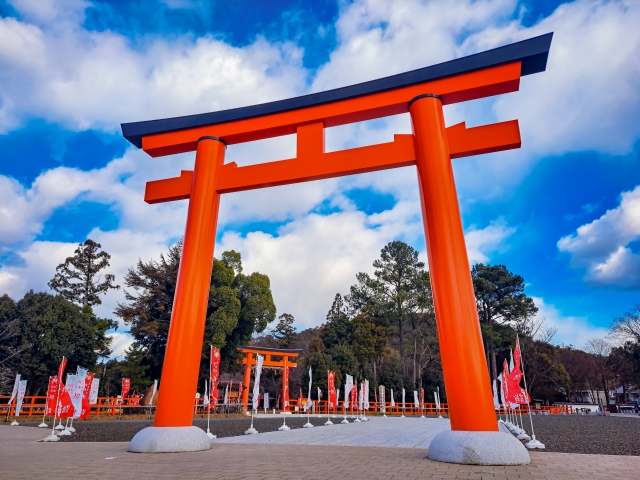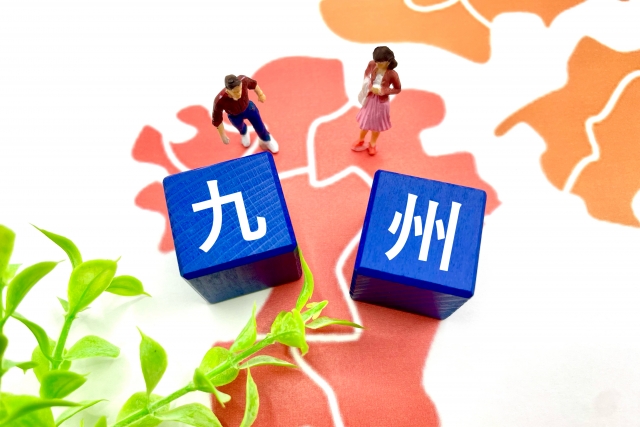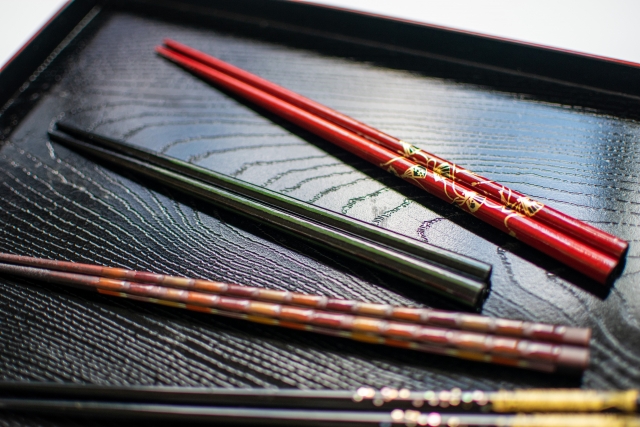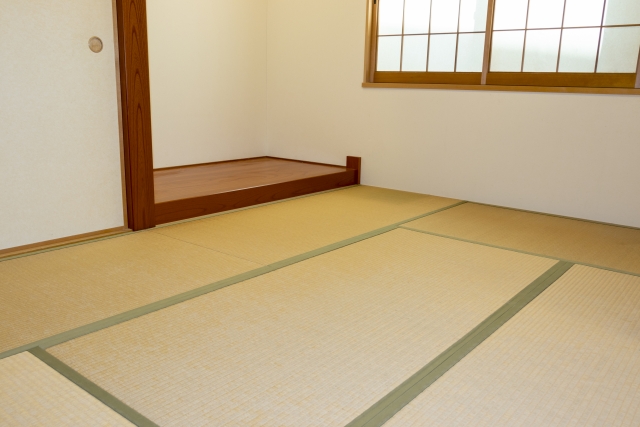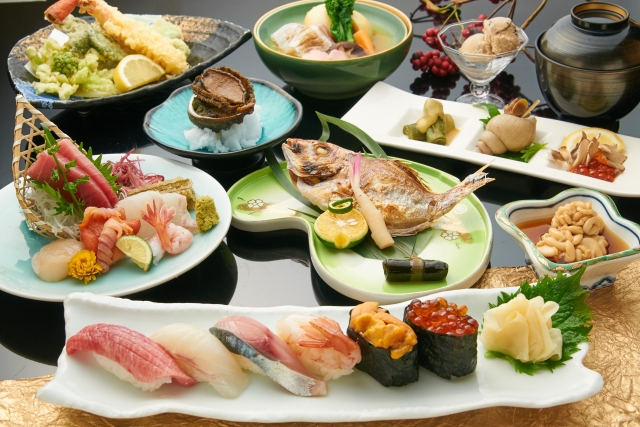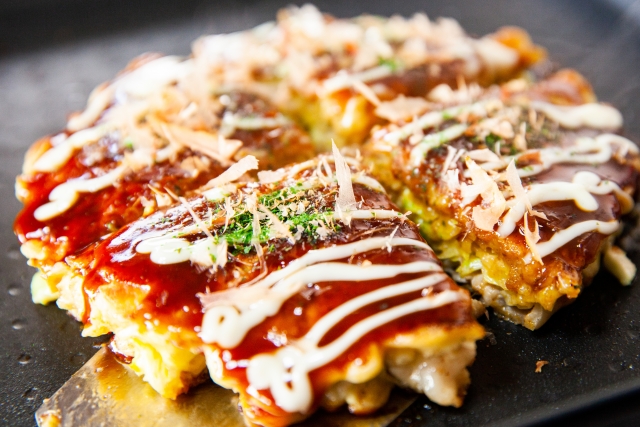Ramen is based on a Chinese cuisine that was introduced from China, but it has developed greatly in Japan added its own unique touch, which has now changed into something completely different.
It is one of the representative dishes that support the restaurant industry in Japan today, and is one of the national foods loved by many Japanese people. The most attractive feature of ramen is that the taste, noodles, and ingredients vary completely from store to store.
 Shoyu-ramen is the original type of ramen in Japan, and has a long history. Ramen that uses soy sauce sauce for the soup is called “”Shoyu-Ramen”” or “”Chuka-Soba””. In general, shoyu- ramen is a combination of a light soup made from chicken stock and kombu seaweed, with wavy noodles and simple ingredients.
Soy sauce is a kind of seasoning made from soybeans, and is one of the most indispensable seasonings for Japanese people.”
Shoyu-ramen is the original type of ramen in Japan, and has a long history. Ramen that uses soy sauce sauce for the soup is called “”Shoyu-Ramen”” or “”Chuka-Soba””. In general, shoyu- ramen is a combination of a light soup made from chicken stock and kombu seaweed, with wavy noodles and simple ingredients.
Soy sauce is a kind of seasoning made from soybeans, and is one of the most indispensable seasonings for Japanese people.”
 Ramen with a soup made of salt sauce and broth is called “”Shio-Ramen. Along with shoyu-ramen, shio-ramen has been eaten in Japan since long time ago. And it is characterized by its light and clear soup. Since the taste of the broth is directly reflected in the soup, some people say that you can tell the strength of a restaurant by eating its shio-ramen. Shio-ramen has been popular in Hakodate, Hokkaido since ancient times, and has gradually spread throughout Japan.
Ramen with a soup made of salt sauce and broth is called “”Shio-Ramen. Along with shoyu-ramen, shio-ramen has been eaten in Japan since long time ago. And it is characterized by its light and clear soup. Since the taste of the broth is directly reflected in the soup, some people say that you can tell the strength of a restaurant by eating its shio-ramen. Shio-ramen has been popular in Hakodate, Hokkaido since ancient times, and has gradually spread throughout Japan.
 Ramen that uses miso in its soup is called “”Miso-ramen””. The most common type is a combination of miso and pork bone soup, but some shops use chicken or seafood based soup. Sapporo Ramen”” in Hokkaido is the most famous among Miso-ramen, but it is now widespread all over Japan and is one of the most popular ramen. and is one of the most popular ramen.
For the thick and rich miso ramen, many restaurants use wavy noodles that are easy to coat with the soup, and serve it with more ingredients.
Ramen that uses miso in its soup is called “”Miso-ramen””. The most common type is a combination of miso and pork bone soup, but some shops use chicken or seafood based soup. Sapporo Ramen”” in Hokkaido is the most famous among Miso-ramen, but it is now widespread all over Japan and is one of the most popular ramen. and is one of the most popular ramen.
For the thick and rich miso ramen, many restaurants use wavy noodles that are easy to coat with the soup, and serve it with more ingredients.
 Ramen made with soup made from pork bones is called “”Tonkotsu-ramen””. The main difference is that while shoyu, shio, and miso ramen are named after the “”sauce,”” only tonkotsu-ramen is named after the “” broth””.
For this reason, there are many different flavors of tonkotsu-ramen,”” including tonkotsu-shoyu, tonkotsu-shio, and tonkotsu-miso. All of these soups contain nutrients from the cartilage and marrow of the pig bones, giving them a rich and unique flavor.Of these four common types, this flavor is the most one that people like or dislike.”
Ramen made with soup made from pork bones is called “”Tonkotsu-ramen””. The main difference is that while shoyu, shio, and miso ramen are named after the “”sauce,”” only tonkotsu-ramen is named after the “” broth””.
For this reason, there are many different flavors of tonkotsu-ramen,”” including tonkotsu-shoyu, tonkotsu-shio, and tonkotsu-miso. All of these soups contain nutrients from the cartilage and marrow of the pig bones, giving them a rich and unique flavor.Of these four common types, this flavor is the most one that people like or dislike.”
 Ramen noodles are made by kneading together water, flour, and kansui. Kansui is sodium carbonate or potassium carbonate, and is classified as a food additive under the Food Sanitation Law. The addition of kansui gives ramen its unique chewiness. When wheat and water are kneaded together without adding kansui, the noodles become udon noodles.
There are many different types of ramen noodles, such as “thick/thin” and “straight/wavy”. Some ramen shops allow you to choose the type of noodle and how it is boiled (firm, medium, or soft) when you order.
Recently, more and more ramen shops are focusing on homemade noodles and using wheat produced in Japan.
Ramen noodles are made by kneading together water, flour, and kansui. Kansui is sodium carbonate or potassium carbonate, and is classified as a food additive under the Food Sanitation Law. The addition of kansui gives ramen its unique chewiness. When wheat and water are kneaded together without adding kansui, the noodles become udon noodles.
There are many different types of ramen noodles, such as “thick/thin” and “straight/wavy”. Some ramen shops allow you to choose the type of noodle and how it is boiled (firm, medium, or soft) when you order.
Recently, more and more ramen shops are focusing on homemade noodles and using wheat produced in Japan.
 This is a standard ingredient in almost all ramen noodles. It is mainly made by simmering pork belly for a long time. It can be sweet or spicy, and each restaurant has its own way of making it fit the soup. Some restaurants also use kakuni as a topping instead of chashu. Kakuni is made by stewing pork belly cut into bite-sized pieces, and is characterized by its sweet flavor and tender texture.
This is a standard ingredient in almost all ramen noodles. It is mainly made by simmering pork belly for a long time. It can be sweet or spicy, and each restaurant has its own way of making it fit the soup. Some restaurants also use kakuni as a topping instead of chashu. Kakuni is made by stewing pork belly cut into bite-sized pieces, and is characterized by its sweet flavor and tender texture.
 Menma is a processed food made by lactic acid fermentation of a type of bamboo called machiku, which is originated from China and Taiwan. It contains a unique sweetness and is characterized by its chewy texture. Many people find it indispensable to ramen, and it is one of the standard toppings.
Menma is a processed food made by lactic acid fermentation of a type of bamboo called machiku, which is originated from China and Taiwan. It contains a unique sweetness and is characterized by its chewy texture. Many people find it indispensable to ramen, and it is one of the standard toppings.
 Boiled eggs, seasoned eggs, and raw eggs are all popular toppings. The half-boiled type is easily preferred and looks more colorful when placed on ramen. One of the most popular is the seasoned egg, which is a half-boiled egg marinated in a soy sauce-base sauce. The seasoned white and tasty yolk go well with all types of ramen.
Boiled eggs, seasoned eggs, and raw eggs are all popular toppings. The half-boiled type is easily preferred and looks more colorful when placed on ramen. One of the most popular is the seasoned egg, which is a half-boiled egg marinated in a soy sauce-base sauce. The seasoned white and tasty yolk go well with all types of ramen.
 Many ramen noodles come with chopped fresh green onions as a standard topping. It has a unique flavor and a crunchy texture. Some restaurants also offer the option of a topping called “”spicy white part of green onion called shiraga-negi””, which is seasoned with sesame oil and soy sauce
Many ramen noodles come with chopped fresh green onions as a standard topping. It has a unique flavor and a crunchy texture. Some restaurants also offer the option of a topping called “”spicy white part of green onion called shiraga-negi””, which is seasoned with sesame oil and soy sauce
 Ramen with a lot of bean sprouts is also popular. They do not have a strong and distinctive taste, so they go well with all types of ramen. The crunchy texture is enjoyable and the vegetable is easy to eat with noodles.
Ramen with a lot of bean sprouts is also popular. They do not have a strong and distinctive taste, so they go well with all types of ramen. The crunchy texture is enjoyable and the vegetable is easy to eat with noodles.
 You can often find ramen noodles topped with nori seaweed. Everyone eats it differently; those who prefer it crispy eat the nori first, while others soak it in the soup to soften it before eating it with the noodles. When making ramen at home, wakame seaweed is sometimes added as a topping.
You can often find ramen noodles topped with nori seaweed. Everyone eats it differently; those who prefer it crispy eat the nori first, while others soak it in the soup to soften it before eating it with the noodles. When making ramen at home, wakame seaweed is sometimes added as a topping.
 Corn, often found on Miso Ramen, has a crunchy texture and sweet taste. It’s a topping that people like or dislike, so more and more restaurants are allowing you to choose it as an additional topping.
Corn, often found on Miso Ramen, has a crunchy texture and sweet taste. It’s a topping that people like or dislike, so more and more restaurants are allowing you to choose it as an additional topping.
 Butter, which is often found in miso ramen, adds a rich, creamy flavor to the soup when added. It is favored by people who like a rich taste.
Butter, which is often found in miso ramen, adds a rich, creamy flavor to the soup when added. It is favored by people who like a rich taste.
 Naruto is a type of fish paste with a spiral design in its surface, and has been used in Japan since long ago. It is often drawn as a topping for ramen, but recently, ramen without naruto has become the standard.
Naruto is a type of fish paste with a spiral design in its surface, and has been used in Japan since long ago. It is often drawn as a topping for ramen, but recently, ramen without naruto has become the standard.
 Gyoza is a food made by wrapping ingredients in a flour crust and baking, steaming, or frying it. Each plate contains five or six pieces, so it is recommended to share them with family and friends.
[blogcard url=”https://arigatomedia.jp/food/what-is-gyoza-definition-of-gyoza/311/”]
Gyoza is a food made by wrapping ingredients in a flour crust and baking, steaming, or frying it. Each plate contains five or six pieces, so it is recommended to share them with family and friends.
[blogcard url=”https://arigatomedia.jp/food/what-is-gyoza-definition-of-gyoza/311/”]
 Fried rice is a dish made by frying rice with various ingredients in oil, such as green onions, pork, and eggs. Fried rice in ramen shops is often made with lard for the oil and a strong flavor.
Fried rice is a dish made by frying rice with various ingredients in oil, such as green onions, pork, and eggs. Fried rice in ramen shops is often made with lard for the oil and a strong flavor.
 Chashu rice bowl is a bowl of warm rice topped with chashu pork. The seasoning and toppings vary from restaurant to restaurant.
Chashu rice bowl is a bowl of warm rice topped with chashu pork. The seasoning and toppings vary from restaurant to restaurant.
 In recent years, an increasing number of ramen shops are serving tasty deep-fried chicken or karaage, which is crispy and fried at high temperatures. The price is 200-300 yen, which is inexpensive, and many shops allow you to order a single dish.
In recent years, an increasing number of ramen shops are serving tasty deep-fried chicken or karaage, which is crispy and fried at high temperatures. The price is 200-300 yen, which is inexpensive, and many shops allow you to order a single dish.
 Ramen restaurants are often found around train stations, in busy downtown areas, and along main streets. Most ramen shops are small, seated style with a counter and a few tables. The taste of the soup and the type of noodles vary greatly from restaurant
Simple ramen without particularity is often served in food courts in shopping malls, family restaurants, izakaya (Japanese style pubs), and other restaurants that serve a wide range of food. Instant ramen can be purchased at convenience stores, supermarkets, and some vending machines.
Ramen restaurants are often found around train stations, in busy downtown areas, and along main streets. Most ramen shops are small, seated style with a counter and a few tables. The taste of the soup and the type of noodles vary greatly from restaurant
Simple ramen without particularity is often served in food courts in shopping malls, family restaurants, izakaya (Japanese style pubs), and other restaurants that serve a wide range of food. Instant ramen can be purchased at convenience stores, supermarkets, and some vending machines.
 “Shin-Yokohama Ramen Museum is a food theme park where all the famous ramen from all over Japan are gathered. All the shops have small-sized ramen, so it is recommended if you want to compare different types of ramen. The interiors are a recreation of skyline of post-war Japan from 1930s to 1960s. In addition to the ramen shops, there are also snack shops, coffee shops, and hostess bars.
Location: 2-1421 Shin-Yokohama, Kohoku-ku, Yokohama City, Kanagawa Prefecture
“Shin-Yokohama Ramen Museum is a food theme park where all the famous ramen from all over Japan are gathered. All the shops have small-sized ramen, so it is recommended if you want to compare different types of ramen. The interiors are a recreation of skyline of post-war Japan from 1930s to 1960s. In addition to the ramen shops, there are also snack shops, coffee shops, and hostess bars.
Location: 2-1421 Shin-Yokohama, Kohoku-ku, Yokohama City, Kanagawa Prefecture
 “Cup Noodle Museum is a hands-on facility related to instant noodles, with an exhibition space on the second floor, a place to make your own Cup Noodles on the third floor (reservations required), and a food court on the fourth floor where you can taste noodle dishes from around the world. From the outdoor observatory on the fourth floor, you can enjoy a panoramic view of Yokohama Minato Mirai.
Location: 2-3-4 Shinminato, Naka-ku, Yokohama City, Kanagawa Prefecture
“Cup Noodle Museum is a hands-on facility related to instant noodles, with an exhibition space on the second floor, a place to make your own Cup Noodles on the third floor (reservations required), and a food court on the fourth floor where you can taste noodle dishes from around the world. From the outdoor observatory on the fourth floor, you can enjoy a panoramic view of Yokohama Minato Mirai.
Location: 2-3-4 Shinminato, Naka-ku, Yokohama City, Kanagawa Prefecture
 If there is a vending machine near the entrance of the ramen shop, you can purchase meal tickets in advance. Many vending machines have pictures of the dishes and their prices on them, so after you put in your money, press the food panel and your meal ticket will come out. Give the meal ticket to the server when you have a seat.
At ramen shops that do not have vending machines, after you are seated at the seat you are shown, look at the menu list and order your food. Raise your hand or say “Sumimasen” or “excuse me” to signal the server to come to your table to take your order.If your table has a call button, you can also press the button to call the waitress.
If there is a vending machine near the entrance of the ramen shop, you can purchase meal tickets in advance. Many vending machines have pictures of the dishes and their prices on them, so after you put in your money, press the food panel and your meal ticket will come out. Give the meal ticket to the server when you have a seat.
At ramen shops that do not have vending machines, after you are seated at the seat you are shown, look at the menu list and order your food. Raise your hand or say “Sumimasen” or “excuse me” to signal the server to come to your table to take your order.If your table has a call button, you can also press the button to call the waitress.
 Ramen in Japan is a casual dish, so there are no strict rules of manners. You can eat it any way you like, but here are some common ways that ramen lovers like to eat it.
1.The first bite is taken with a spoon to taste the soup.
2.For the next bite, use chopsticks to eat the noodles.
3.The next bite is eaten with chopsticks, alternating between the noodles and the soup.
4. If there are free toppings available, add a small amount to taste after you have eaten a certain amount. (Be careful not to add too much.)
Ramen noodles have the characteristic of absorbing water and stretching softly, losing their flavor as time goes by. When the ramen you ordered arrives, it is recommended that you finish it as soon as possible.
Ramen in Japan is a casual dish, so there are no strict rules of manners. You can eat it any way you like, but here are some common ways that ramen lovers like to eat it.
1.The first bite is taken with a spoon to taste the soup.
2.For the next bite, use chopsticks to eat the noodles.
3.The next bite is eaten with chopsticks, alternating between the noodles and the soup.
4. If there are free toppings available, add a small amount to taste after you have eaten a certain amount. (Be careful not to add too much.)
Ramen noodles have the characteristic of absorbing water and stretching softly, losing their flavor as time goes by. When the ramen you ordered arrives, it is recommended that you finish it as soon as possible.
 Most ramen restaurants in Sapporo are tonkotsu based and offer three types of ramen: shoyu, miso, and shio. Considering the cold climate of Hokkaido, most ramen noodles are made with the surface of the soup covered with lard. In addition to chashu (pork), menma (bamboo shoots), and negi (green onions), fried vegetables are the standard ingredients, and firm, chewy wavy noodles are often used.
Most ramen restaurants in Sapporo are tonkotsu based and offer three types of ramen: shoyu, miso, and shio. Considering the cold climate of Hokkaido, most ramen noodles are made with the surface of the soup covered with lard. In addition to chashu (pork), menma (bamboo shoots), and negi (green onions), fried vegetables are the standard ingredients, and firm, chewy wavy noodles are often used.
 The biggest feature of Asahikawa Ramen is the double broth made from seafood, pork bones, or chicken bones. Medium-thin, wavy noodles are the most common, and many restaurants use simple ingredients: green onions, menma, and chashu pork.
The biggest feature of Asahikawa Ramen is the double broth made from seafood, pork bones, or chicken bones. Medium-thin, wavy noodles are the most common, and many restaurants use simple ingredients: green onions, menma, and chashu pork.
 Kitakata Ramen originated from “”Shina-Soba””, and uses thick, flat, wavy noodles that are smooth and chewy. The standard soup is a light soy sauce broth, but the broth differs from place to place. It is topped with thickly seasoned chashu pork with a tender texture made from cubes or ribs.
Kitakata Ramen originated from “”Shina-Soba””, and uses thick, flat, wavy noodles that are smooth and chewy. The standard soup is a light soy sauce broth, but the broth differs from place to place. It is topped with thickly seasoned chashu pork with a tender texture made from cubes or ribs.
 Tokyo Ramen is a representative of “”Shoyu Ramen”” and is the original type of Ramen. In most cases, it is made with a Japanese broth, soy sauce based sauce, and medium-thin, wavy noodles. It is said that Asakusa’s “”Rairaiken”” was the first to put chashu pork and menma on top.
Tokyo Ramen is a representative of “”Shoyu Ramen”” and is the original type of Ramen. In most cases, it is made with a Japanese broth, soy sauce based sauce, and medium-thin, wavy noodles. It is said that Asakusa’s “”Rairaiken”” was the first to put chashu pork and menma on top.
 Onomichi Ramen is characterized by a soup made mainly of chicken bones and iriko (dried sardines), with pork back fat floating on top. The noodles are flat, medium thin and straight, and the standard toppings are chashu pork, menma and green onions.
Onomichi Ramen is characterized by a soup made mainly of chicken bones and iriko (dried sardines), with pork back fat floating on top. The noodles are flat, medium thin and straight, and the standard toppings are chashu pork, menma and green onions.
 Hakata Ramen is a tonkotsu (pork bone) ramen that combines cloudy tonkotsu soup with ultra-thin straight noodles. The most distinctive feature of this soup is that it is made by simmering almost only pork bones for a long time, squeezing out the extract of the marrow and emulsifying the fat.
Abd when ordering, you can specify the noodle hardness in several levels, such as “”extra firm,”” “”firm,”” “”medium,”” “”soft,”” and “”exrta soft.
There is also a service called “”kaedama,”” where you can order extra noodles. Ramen in Kyushu usually uses garlic as a seasoning, but in Hakata, fresh garlic is used after being grated or crushed.
Hakata Ramen is a tonkotsu (pork bone) ramen that combines cloudy tonkotsu soup with ultra-thin straight noodles. The most distinctive feature of this soup is that it is made by simmering almost only pork bones for a long time, squeezing out the extract of the marrow and emulsifying the fat.
Abd when ordering, you can specify the noodle hardness in several levels, such as “”extra firm,”” “”firm,”” “”medium,”” “”soft,”” and “”exrta soft.
There is also a service called “”kaedama,”” where you can order extra noodles. Ramen in Kyushu usually uses garlic as a seasoning, but in Hakata, fresh garlic is used after being grated or crushed.
 Okinawa soba was once a court dish of the Ryukyu Kingdom. Although it has the word “”soba”” in its name, it does not contain any buckwheat flour, and the noodles are made of 100% wheat flour. The broth is usually made from pork bones or dried bonito flakes, and is topped with a large piece of pork chashu, green onions, and red ginger.
Okinawa soba was once a court dish of the Ryukyu Kingdom. Although it has the word “”soba”” in its name, it does not contain any buckwheat flour, and the noodles are made of 100% wheat flour. The broth is usually made from pork bones or dried bonito flakes, and is topped with a large piece of pork chashu, green onions, and red ginger.
 Instant ramen is a type of instant noodle that can be eaten immediately after pouring hot water into it, or can be cooked at the same time as the soup by boiling it in a pot. Instant ramen is a food product that originated in Japan and is exported to many other countries. It is packaged in bags or cups, and the noodles can be fried, dried, or fresh. It can be purchased at supermarkets, convenience stores, drug stores, and some vending machines.
Instant ramen is a type of instant noodle that can be eaten immediately after pouring hot water into it, or can be cooked at the same time as the soup by boiling it in a pot. Instant ramen is a food product that originated in Japan and is exported to many other countries. It is packaged in bags or cups, and the noodles can be fried, dried, or fresh. It can be purchased at supermarkets, convenience stores, drug stores, and some vending machines.
Contents


